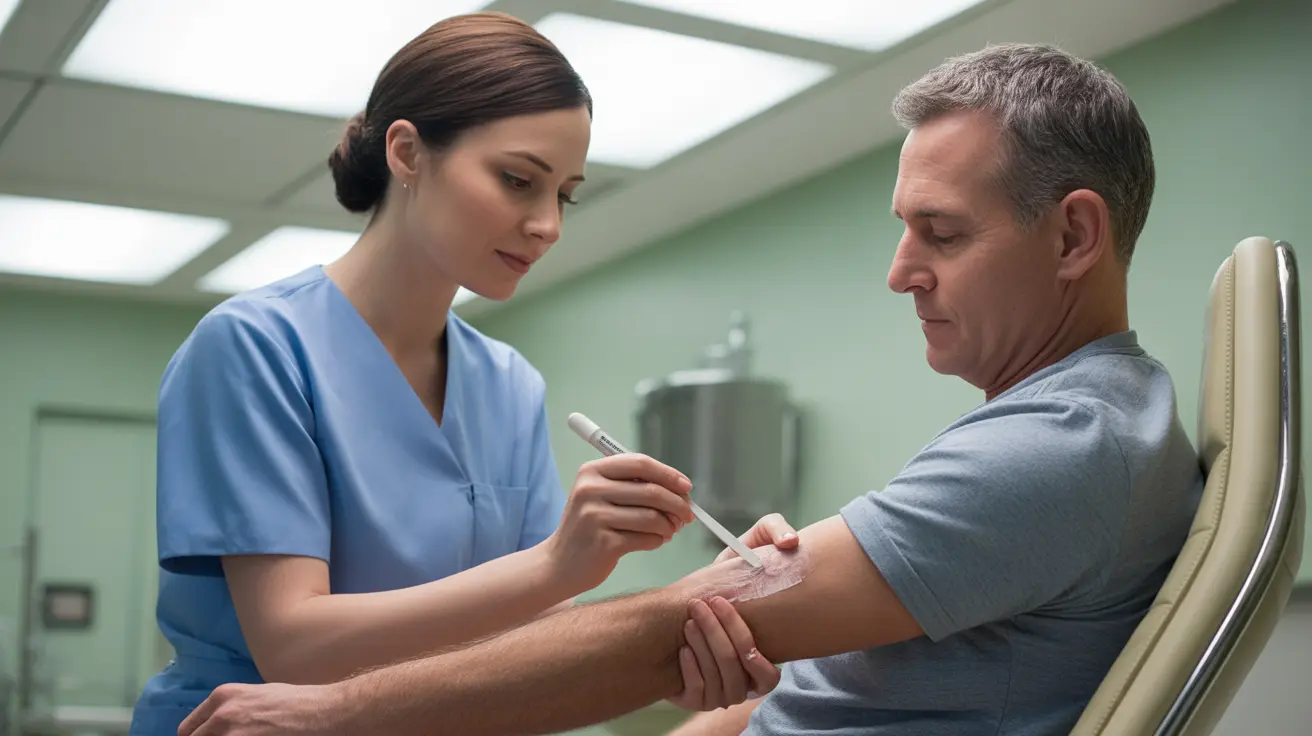If your healthcare provider has ordered a KOH test to investigate a potential fungal skin infection, you're likely wondering what this test involves and what the results might mean. A KOH (potassium hydroxide) test is a simple, quick diagnostic procedure that helps doctors identify fungal infections affecting the skin, hair, or nails.
Understanding your KOH test results is crucial for getting the right treatment for fungal infections. This comprehensive guide will explain everything you need to know about the testing process, interpretation of results, and next steps in your treatment journey.
What Is a KOH Test?
A KOH test is a microscopic examination that uses potassium hydroxide solution to detect the presence of fungal elements in skin, nail, or hair samples. The solution breaks down non-fungal cells while leaving fungal structures intact, making them easier to identify under a microscope.
The Testing Process
During a KOH test, your healthcare provider will gently scrape a small sample from the affected area of your skin, nail, or hair. This sample is then placed on a microscope slide and treated with the KOH solution. The entire procedure typically takes just a few minutes and causes minimal discomfort.
Sample Collection Methods
Your provider may use different collection techniques depending on the location of the suspected infection:
- Skin: Gentle scraping with a blunt scalpel
- Nails: Collection of debris from under the nail or nail clippings
- Hair: Removal of affected hair strands with their roots
Understanding Your Results
When your KOH test comes back positive, it means fungal elements were detected in your sample. This confirmation allows your healthcare provider to:
- Begin appropriate antifungal treatment
- Determine the type of fungal infection present
- Rule out other skin conditions with similar appearances
Common Types of Fungal Infections Detected
A positive KOH test can identify various fungal infections, including:
- Dermatophyte infections (ringworm)
- Candida infections
- Tinea versicolor
- Onychomycosis (nail fungus)
Treatment After a Positive Result
Once a fungal infection is confirmed through a positive KOH test, your healthcare provider will recommend appropriate treatment options, which may include:
- Topical antifungal medications
- Oral antifungal drugs for more severe infections
- Specific hygiene and prevention measures
- Follow-up testing to ensure the infection has cleared
Frequently Asked Questions
- What does a positive KOH test for skin mean, and what happens next?
A positive KOH test confirms the presence of fungal elements in your sample. Your healthcare provider will prescribe appropriate antifungal treatment based on the type and severity of the infection. Treatment typically includes either topical or oral antifungal medications.
- How is the KOH test for skin fungus performed, and does it hurt?
The test involves gentle scraping of the affected area to collect a small sample. While you may feel slight pressure during the scraping, the procedure is typically painless or causes only minimal discomfort. The entire process takes just a few minutes.
- What kinds of fungal infections can a positive KOH result detect?
A positive KOH test can detect various fungal infections, including dermatophyte infections (ringworm), candida infections, tinea versicolor, and nail fungus (onychomycosis). The specific type of fungus can often be determined by examining the fungal structures under the microscope.
- Are there any risks or side effects from having a KOH skin test?
The KOH test is very safe with minimal risks. You might experience slight temporary discomfort at the sample collection site. There are no significant side effects associated with the procedure.
- What should I do if my KOH test is negative but I still have symptoms?
If your KOH test is negative but symptoms persist, your healthcare provider may recommend additional testing or alternative diagnostic methods. Sometimes, fungal elements can be missed in the sample, or your symptoms might be caused by a non-fungal condition that requires different treatment.




